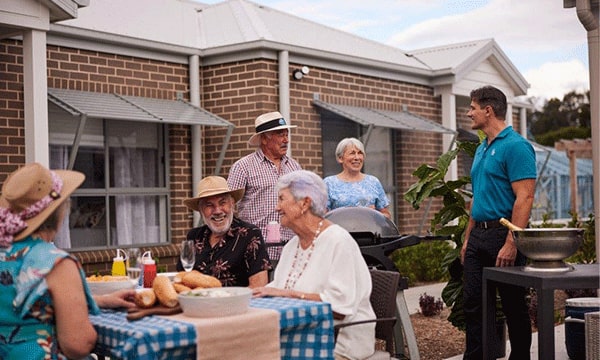Your guide to moving into a retirement village
When the decision to move into a retirement village has been made, the thought of packing up your old home and moving in to your new home can be overwhelming.

When the decision to move into a retirement village has been made, the thought of packing up your old home and moving into your new home can feel overwhelming.
You've compared prices, location, and features, and have chosen a retirement village to suit your lifestyle and needs. That’s a big decision! Now comes the transition—and there's so much to do.
To support your move, we’ve developed the ultimate guide with practical tips, checklists, and additional advice to make your transition smoother and less stressful.
Plan and Declutter - four months before your move
Someone wise once said, make a list and check it twice. There are a number of things you'll need to arrange in preparation for your move. Writing your own plan of what needs to happen will help you feel in control.
Whether you need to sell your home or not, the transition to your new lifestyle will generally involve down-sizing and de-cluttering.
De-cluttering is all about prioritising what's important to you and what isn't needed anymore. We've developed a checklist to help you start the process:

Checklist
Get yourself some boxes, garbage bags, packing tape, labels, thick textas, post it notes, and butchers paper or newspaper.
- Start sorting your belongings one room at a time. Aim for 1-2 rooms per week.
- Divide items into three distinct piles: 1. Keep 2. Donate/Sell 3. Toss.
- Make a list of furniture and items that you want to take with you.
- Start to box items that you're going to keep, but don't need right now.
- Label each box with the room and its contents (e.g. kitchen – cutlery). It's a good idea to keep a separate list of all boxes and contents.
- Plan your charity donations. Some charities will collect items directly from your home (most charities will not accept mattresses or white goods).
- You may be able to book a collection for items in the ‘Toss' pile with your local Council. See your local Council website for more information.
- Items in your ‘Sell' pile can be sold through websites such as Gumtree, Facebook Marketplace and The Trading Post.
Decluttering tips
- Be kind to yourself – this process can be emotional. Involve a family member or friend for support.
- Take photos of sentimental items you can’t keep, so you can still treasure the memories.
- Create a 'Maybe' box for items you're unsure about. If you don’t use them in the next month, consider letting them go.
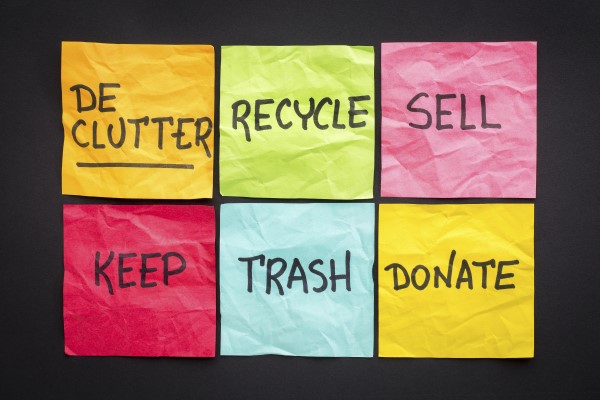
Getting sale ready and picking an agent – three months before your move
Your home needs to be well presented to ensure that it's market ready. First impressions are everything, and the better your property presents, the more likely you'll receive an offer after an open house.
Ensure you complete any odd jobs such as painting, repairs and yard maintenance, and do a thorough surface clean. Sometimes this calls for professional help. In today's competitive market your home needs to stand out and attract the right potential buyers.
Here's a list of other jobs to consider before holding your first open house:
Checklist
- De-personalise your home by putting family photos and personal belongings out of sight. This makes it easier for potential buyers to imagine themselves in your home.
- Style your furniture, buy some fresh flowers and use air fresheners to create a welcoming environment.
- If you have pets, make sure they're out of the house and their belongings are put away.
Picking an agent
If you're selling your home you'll need to find an agent or provider that'll get the best result with the least amount of fuss. Choosing the right agent is important. You need to feel comfortable with your choice and trust the agent has your best interests at heart.
At this time you'll also need to engage a conveyancer to ensure your home sale is completed in a timely and lawful manner.
Extra tips:
- Hire a professional stylist if you’re unsure how to best present your space. Small touches can increase your home's value.
- Don’t forget curb appeal – tidy gardens, clean pathways, and a fresh front door can create a great first impression.
Find the right retirement village
for you
On the market – two months before your move
You’re in full swing now with home inspections underway. Now that you've secured an agent and prepared your home, the sales campaign starts. The key is to stay organised and keep your space clean and welcoming.
Keep it neat
People often request to view the property outside of the set open house inspection times, meaning your home needs to be presentable at all times. Some sellers choose to move out temporarily to ensure their home remains presentable, but this isn't always possible.
The details
Your real estate agent will request the name of your conveyancer at this time and will prepare a contract for sale (in law, conveyancing is typically the transfer of legal title of property from one person to another).
Extra tip:
Have a go-to “open house kit” ready with fresh flowers, air freshener, wipes, and a quick tidy-up checklist for last-minute visits.
Sold and preparing to move – one month before your move
Now it’s getting real - your home is sold and you're getting ready to start a new chapter. Congratulations! Here's what to do next:
Checklist
- Arrange contents insurance for your home.
- Book your removalist (and decide whether to get a packing service included).
- If you have a dog, take them for a few walks around your new retirement village so it's familiar when you move in.
- Order your window furnishings for your new home.
- Transfer your services (gas, electricity and phone).
- Apply for the electoral roll in your new suburb.
- Redirect your mail.
- Notify companies you receive communication from of your new address.
- Update pet registration details.
- Cancel newspaper deliveries and set up new arrangements as appropriate at your new home.
- Arrange for someone to tag and test your electrical appliances before you move in. This helps to reduce the risk of electrical fires in your new home.
- Notify Medicare of your new address.
- Notify the Australian Tax Office of your new address.
- Get your driver's license updated.
Extra tips:
- Create a “first week essentials” box with items you’ll need immediately (e.g., toiletries, kettle, medication, clothes, chargers).
- Take photos of your electronics setup (TV, computer, Wi-Fi router) to make reconnecting everything easier in your new home.
- Prepare a folder for key documents: contracts, ID, medical details, and emergency contacts.
Learn more about the benefits of retirement living

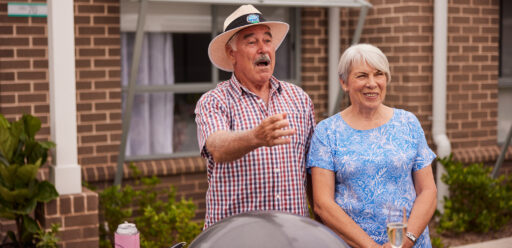
Moving day
Moving is a significant life event. Make sure you eat a good breakfast and keep hydrated throughout the day. Clear your schedule and allow time for any unexpected hiccups, like moving truck delays. Make plans for pets to stay with family or friends until you're settled in.
Checklist
- Once you've arrived at your new home, begin unpacking all of your belongings.
- Unpack at your own pace. You may wish to engage a service to help you do this.
- If you have a pet, they'll also need time to adjust to their new home.
- Go for a walk during the day to familiarise yourself with your new surroundings.
Extra tips:
- Arrange for a friend or family member to check in with you during the day or help you settle in.
- Keep a cooler bag with water, snacks, and medications accessible during the move.
After you’ve moved
You're in! Take time to get to know your new environment and neighbours.
Tips:
- Attend a welcome event or social activity to meet others and start building your new community.
- Place familiar items (photos, keepsakes, favourite blanket) around your space to make it feel like home.
- Ask your village operator for a resident handbook or contact list for local services, social groups and emergency procedures.
FAQs
1. What should I expect on moving day?
Moving day can be physically and emotionally draining, so clear your schedule, stay hydrated, and take breaks. Expect removalists to arrive early and allow time for unexpected delays. It’s helpful to have a friend or family member assist or check in on you.
2. How can I make the move-in process smoother?
Pack a ‘moving day essentials box’ with medications, toiletries, a change of clothes, snacks, important documents, chargers, and anything else you’ll need right away. Label boxes clearly and keep a copy of what’s in each box.
3. Should I hire professional movers?
Yes, especially if you want to avoid injury or stress. Look for movers experienced with downsizing or senior relocation, and ask if they offer packing or unpacking services too.
4. How do I help my pet adjust to the move?
Bring familiar bedding, toys, and keep their feeding routine the same. If possible, take your pet for a few visits to the village before moving day. On the day, it may be best for your pet to stay with a friend or family member until you're fully settled.
5. Will someone be there to help me settle in?
Most villages have a welcome team or village manager who can greet you, show you around, and answer questions. Ask if there's a buddy system or social introduction for new residents.
6. What if something breaks or gets lost during the move?
Check that your removalist has insurance coverage for lost or damaged goods. Take photos of valuable items before the move and ensure fragile boxes are marked clearly. You may wish to take smaller fragile items in your car instead.
7. How do I connect my utilities and services in the new home?
Arrange connection of electricity, gas, water, phone, and internet at least a week before your move. If your village includes some of these services, ask for clarification about what's already set up.
8. Should I do a walkthrough of my unit before moving in?
Yes. Do a pre-move inspection of your new home a few days before moving in to check everything is clean, functioning, and ready. This is the time to raise any maintenance concerns with the village manager.
9. How do I cope with the emotional side of moving?
It’s normal to feel grief, relief, excitement, or overwhelm - often all at once. Stay connected to loved ones, give yourself time to adjust, and don’t feel pressure to have everything perfect right away. This is a major life change, and it’s okay to ease into it.
10. How do I stay connected to the community after I move?
Join welcome events, attend social activities, and say hello to neighbours. Most villages have clubs, classes, and communal spaces to make meeting people easier.
11. What services do retirement villages offer to help with moving in?
Some villages partner with downsizing consultants, removalists, or unpacking services. Ask your village if they offer move-in support or recommended providers.
12. What if I need extra support after moving in?
You can often access in-home care services, even while living independently. Ask the village operator about available aged care pathways or service partnerships.
13. Can I decorate or renovate my unit once I move in?
Minor interior decorating like painting or hanging art is often allowed. Major renovations typically need approval from the village management and may be restricted.
Find the right retirement village for you
What are the benefits of living in a retirement village?
Retirement villages offer a safe, supportive environment with like-minded neighbours and access to shared facilities such as community centres, gardens, gyms, and organised activities. They’re ideal for people who want to maintain their independence while enjoying low-maintenance living, a strong sense of community, and peace of mind with on-site staff and emergency support systems.
Who is suited to retirement village living?
Retirement villages are sometimes mistaken as the same as a residential aged care facility, however this is not the case. Retirement village living is best for people who are still able to live independently in their own home, but want to enjoy the benefits of living in a community with other older Australians. Retirement villages come in many shapes and sizes and can range from a small one-or-two bedroom independent living unit, to a four-bedroom villa or high-rise apartment.
Can couples move into a retirement village together?
Yes, many retirement villages are designed with couples in mind. Couples can move into a shared unit or villa, provided both meet the village’s age or eligibility criteria. It’s a great option for couples who want to continue living together in a more manageable home while accessing lifestyle benefits and social opportunities together.
Should I speak to a financial adviser?
Making the move to a retirement village is an important financial decision and it is encouraged that you seek help from a financial advisor to understand the costs involved. A financial planner will consider your personal situation and look at things like capital gain tax, your assets and current home value within the context of the current property market.
Most village operators offer a range of payment options that can include ongoing fees that contribute to the cost of maintaining the community, similar to a strata levy. The village operator may also charge deferred management fees.
Do I need to sell my current home before moving into a retirement village?
Not always. Some people choose to rent or finance their new residence before selling. Again, speak to a financial adviser to determine what’s best for your situation.
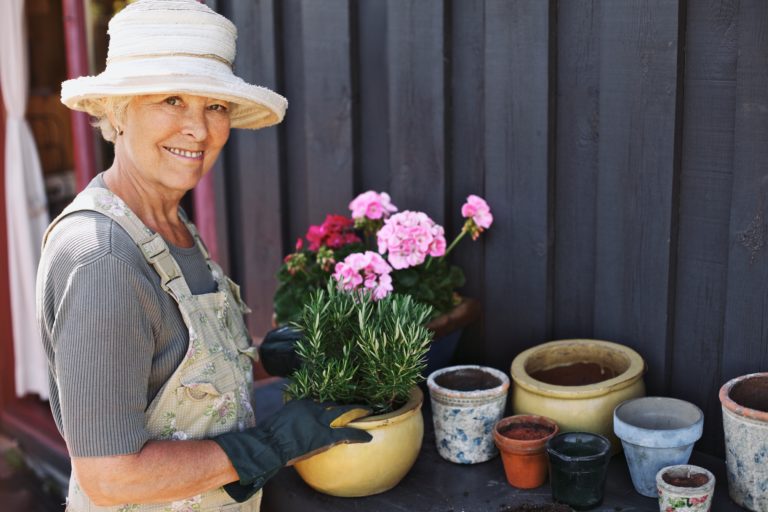
Discover what ageing in place means and how it can benefit you
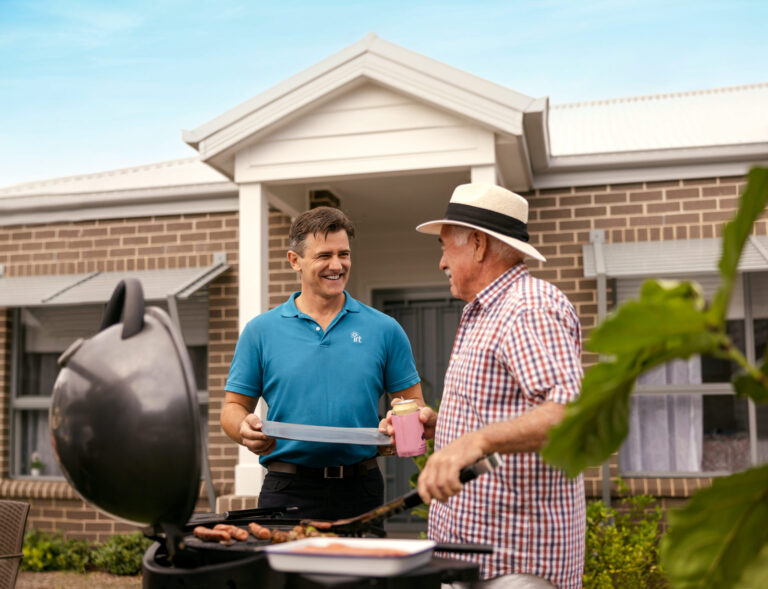
Retirement living at IRT
If you’re interested in downsizing your house and upsizing your life, IRT has more than 30 retirement villages across NSW, Qld and ACT. Find out more about the possibilities of village life and how one of our independent living communities can suit you and your unique needs.
Find out moreFind the right retirement village
for you
You may also like
What is the difference between CHSP and Home Care Packages?
If you’re interested in getting some home care, you’ve likely heard of the terms ‘Home Care Package’ and ‘Commonwealth Home Support Program.’
The Benefits of Living in a Retirement Village
Read about the benefits of retirement village life, including the lifestyle, community and health benefits.


